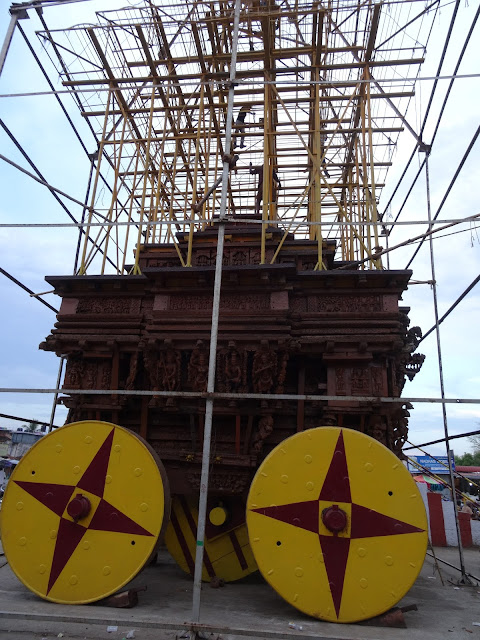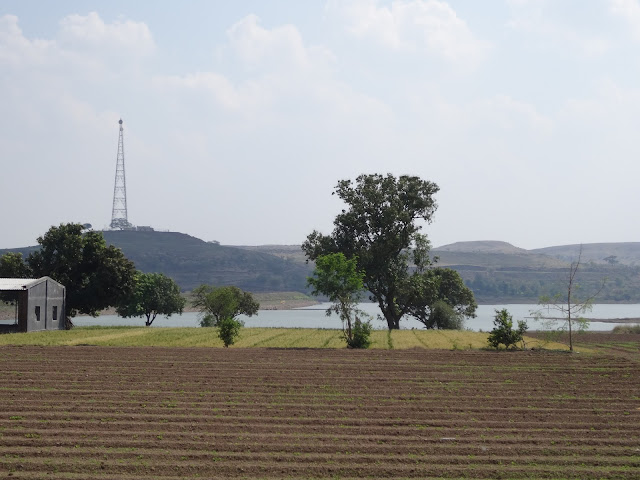_ Math and Architecture _
Perhaps it is best to think about what we are trying to do with architecture. What should it be ideally? Math is of course needed as a practical tool for engineering and measurement, but when we talk of aesthetics we are of course talking about a different use of math.
There are actually many other uses for math and the readers will probably respond according to their goals. Those obsessed with the "sacred," and the romance of the past will perhaps answer that math is needed and used to achieve sacred principles and relationships: the importance of 3, the fact that 8 stands for the resurrection, 12 as a divine number, etc, golden mean, etc, etc.
Those who approach things from a more intellectual or mathematical point of view may focus on the order of composition and rationality that mathematics brings. These minds probably favor the rational Renaissance as the highest point possible.
Probably each viewpoint or approach has its own truth. For me I ask myself the question again, what should architecture be? And, I answer this with a single word: beautiful. Then I ask myself, what is beautiful - what is beauty? And, beauty is hard to define; so, I search for examples...I think of music and the way that it reaches to my core; I think of sunsets; I think of walking through a forest and the peace I sense; I think of flowers and the way that each petal fits together; I think of vibrant paintings; I think of all these things and many other things, and then I ask myself, what makes them so beautiful?
All of these things have in common elements of composition, and these elements combine to create the sensation of beauty. There is unity, proportion, rhythm, harmony, nuances, etc. It is not so easy to break apart the composition, because when something is truly beautiful each part is less itself and more of the whole. But, if you did, you would find that one part is proportion, and proportion is of course related to math.
The notes of the musical scale, the leaves of a tree, the division of a face and body, the field of colors in a painting, all of these things have a structure and proportion - they have much more also, but proportion is one necessity.
So why is math important for architecture? Or better yet, why is it important for beautiful architecture? Because, beauty is composed, a part of composition is proportion, and proportion relates to mathematics. It doesn't have to be about symbolism, theory, or philosophy. It can simply be about creating beauty in and of itself. Mathematics and proportion do not create beauty by themselves, but they are a necessary part of the compositional whole.
Perhaps it is best to think about what we are trying to do with architecture. What should it be ideally? Math is of course needed as a practical tool for engineering and measurement, but when we talk of aesthetics we are of course talking about a different use of math.
There are actually many other uses for math and the readers will probably respond according to their goals. Those obsessed with the "sacred," and the romance of the past will perhaps answer that math is needed and used to achieve sacred principles and relationships: the importance of 3, the fact that 8 stands for the resurrection, 12 as a divine number, etc, golden mean, etc, etc.
Those who approach things from a more intellectual or mathematical point of view may focus on the order of composition and rationality that mathematics brings. These minds probably favor the rational Renaissance as the highest point possible.
Probably each viewpoint or approach has its own truth. For me I ask myself the question again, what should architecture be? And, I answer this with a single word: beautiful. Then I ask myself, what is beautiful - what is beauty? And, beauty is hard to define; so, I search for examples...I think of music and the way that it reaches to my core; I think of sunsets; I think of walking through a forest and the peace I sense; I think of flowers and the way that each petal fits together; I think of vibrant paintings; I think of all these things and many other things, and then I ask myself, what makes them so beautiful?
All of these things have in common elements of composition, and these elements combine to create the sensation of beauty. There is unity, proportion, rhythm, harmony, nuances, etc. It is not so easy to break apart the composition, because when something is truly beautiful each part is less itself and more of the whole. But, if you did, you would find that one part is proportion, and proportion is of course related to math.
The notes of the musical scale, the leaves of a tree, the division of a face and body, the field of colors in a painting, all of these things have a structure and proportion - they have much more also, but proportion is one necessity.
So why is math important for architecture? Or better yet, why is it important for beautiful architecture? Because, beauty is composed, a part of composition is proportion, and proportion relates to mathematics. It doesn't have to be about symbolism, theory, or philosophy. It can simply be about creating beauty in and of itself. Mathematics and proportion do not create beauty by themselves, but they are a necessary part of the compositional whole.




















































